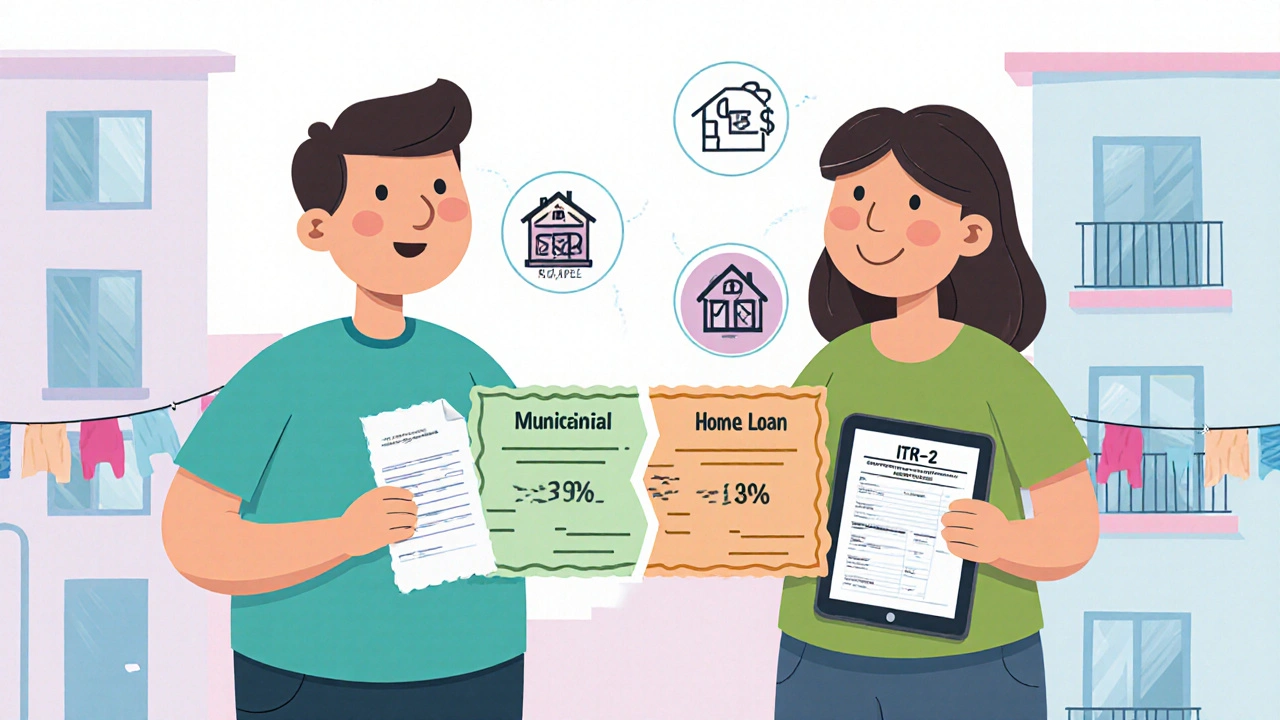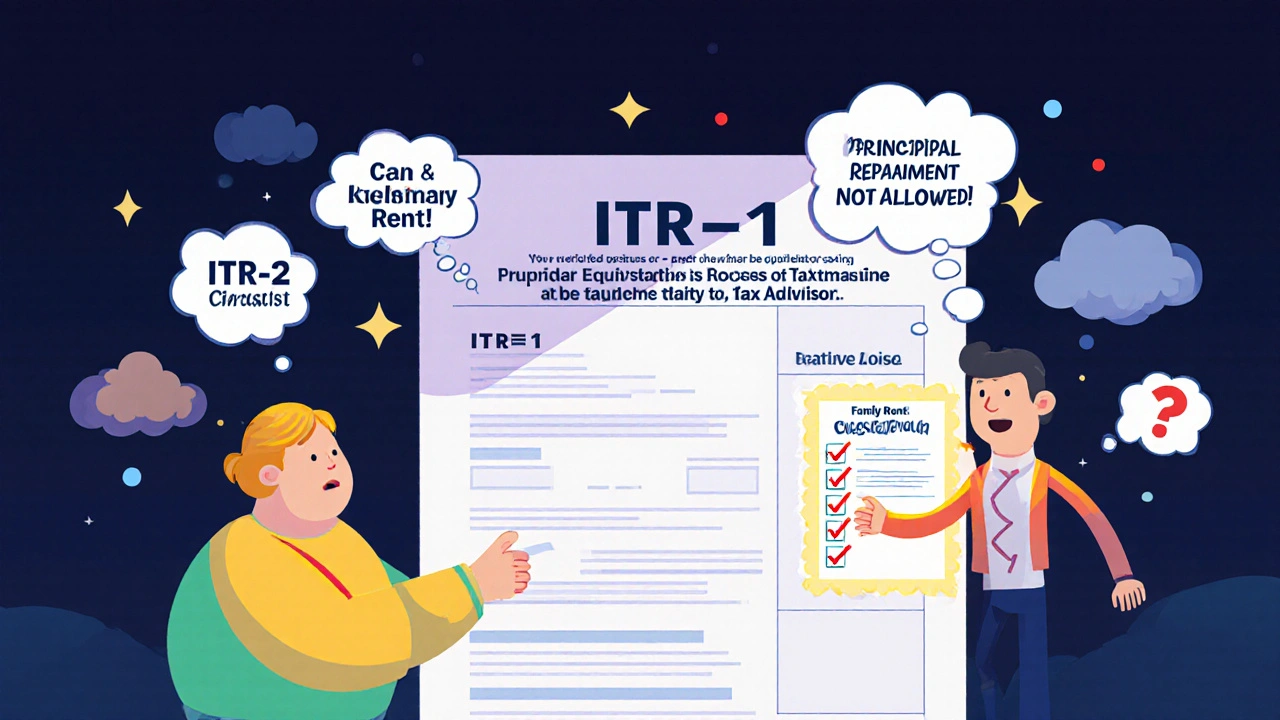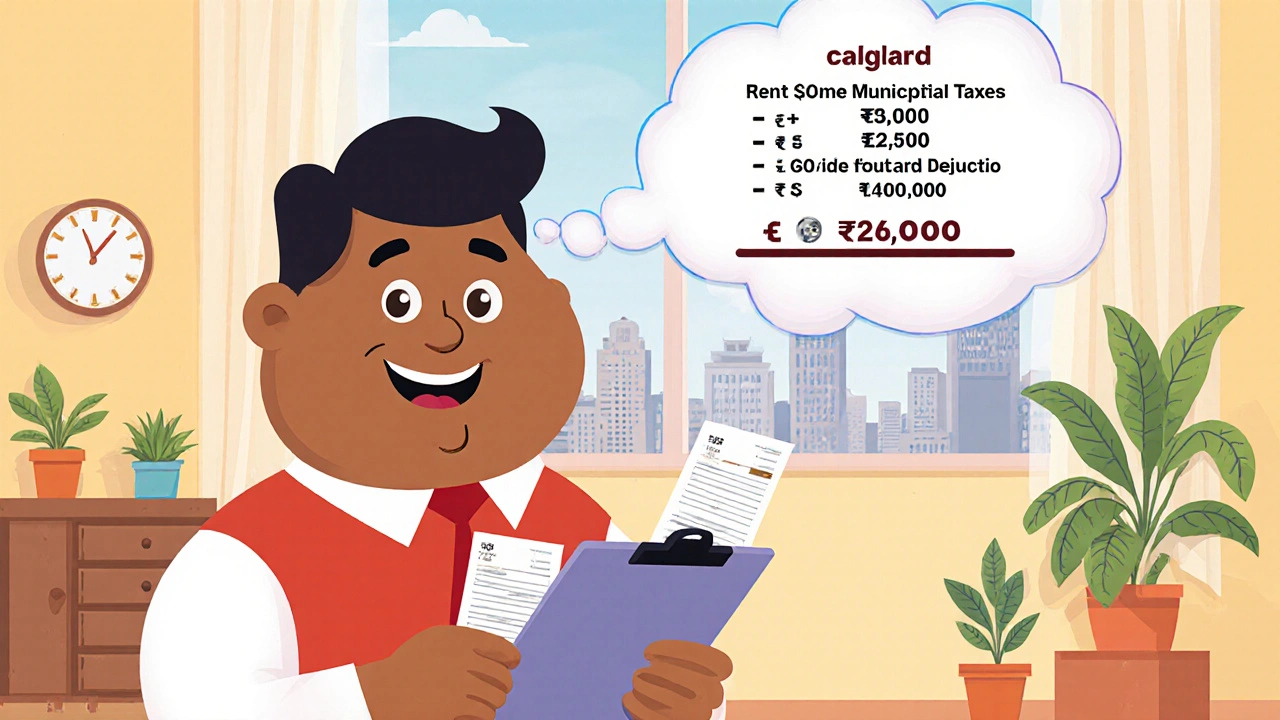Rental Income Tax in India: How to Declare Rent and Claim Deductions
Every year, millions of Indians earn rental income - from a spare room in Delhi to an entire apartment in Bangalore. But many don’t know how to report it correctly, or worse, they assume they don’t have to. That’s a mistake. The Income Tax Department tracks rental income closely, and missing even one form can trigger notices, penalties, or audits. The good news? If you understand the rules, declaring rent and claiming deductions is straightforward. You’re not just staying compliant - you’re keeping more of your money.
Is rental income taxable in India?
Yes. Any money you earn from renting out a property - whether it’s a flat, house, shop, or even parking space - counts as income. It doesn’t matter if you’re an individual, HUF, or company. The tax law calls this Income from House Property. Even if you rent it out for just one month, you must report it.
There’s no minimum threshold. Unlike salary or business income, where you might have a basic exemption limit, rental income is taxable from the first rupee. But here’s the catch: you don’t pay tax on the full rent you collect. The law lets you subtract certain expenses. That’s where most people lose track - they report the rent amount and pay tax on the whole sum. That’s overpaying.
How to calculate taxable rental income
Start with the actual rent you received during the financial year (April 1 to March 31). Then, subtract three things:
- Municipal taxes paid - only the portion you actually paid during the year, not what’s due or unpaid.
- Standard deduction - 30% of the net annual value (after municipal taxes). This covers repairs, maintenance, and other unknown costs. You don’t need receipts for this.
- Interest on home loan - if you borrowed money to buy or construct the property, you can deduct the full interest paid during the year. There’s no limit if the property is rented out.
Example: You collect ₹80,000 in rent annually. You paid ₹5,000 in municipal taxes. Your net annual value is ₹75,000. You get a 30% standard deduction: ₹22,500. You also paid ₹60,000 in home loan interest. Your taxable income from this property? ₹75,000 - ₹22,500 - ₹60,000 = ₹-7,500. That’s a loss. You can carry this loss forward to offset future rental income - up to eight years.
What deductions can you claim?
Let’s break down what you can and can’t deduct.
- Allowed: Municipal taxes, standard 30% deduction, home loan interest, insurance premiums for the property, repair costs (if you itemize them instead of taking the 30%), and property management fees.
- Not allowed: Principal repayment on home loan, personal expenses like electricity or water bills paid by you (unless the tenant pays you back), interior decoration, furniture costs, or capital improvements like a new kitchen.
Important: If you take the 30% standard deduction, you can’t claim actual repair costs separately. Choose one or the other. Most people pick the 30% because it’s simpler and often higher.
Home loan interest is the biggest deduction. If your loan interest is ₹1.2 lakh and your net rent is ₹1 lakh, you still get to claim the full ₹1.2 lakh. The excess ₹20,000 becomes a loss. You can carry it forward and use it against future rental income - or even offset it against other income like salary or business profits.
What if you own multiple properties?
Each property is treated separately. You must calculate income or loss for each one. But here’s the trick: if one property gives you a loss and another gives you profit, you can offset them.
Example: Property A earns ₹1.5 lakh net profit. Property B has a ₹90,000 loss after deductions. Your total taxable rental income? ₹60,000. You pay tax only on that.
But if you have more than one self-occupied property (not rented), the rules change. Only one can be claimed as self-occupied. The others are treated as deemed rented, meaning you must calculate notional rent even if you didn’t rent them out. That’s a common trap. Many people forget this and end up underreporting.

How to declare rental income
You report rental income in your Income Tax Return (ITR). The form you use depends on your other income sources:
- ITR-1 (Sahaj): Only if your rental income is your only additional income and it’s less than ₹50 lakh.
- ITR-2: If you have rental income plus other income like capital gains, foreign income, or more than one house property.
- ITR-3: If you’re a business owner with rental income.
On the ITR form, go to the Income from House Property section. You’ll need:
- Address of the property
- Period of ownership
- Actual rent received
- Municipal taxes paid
- Home loan interest paid (with loan account number and lender name)
- Any other deductions claimed
Keep copies of rent receipts, bank statements showing rent deposits, municipal tax receipts, and home loan interest certificates. You don’t need to attach them, but you must keep them for at least six years in case the tax department asks.
What if you rent to a family member?
Yes, you still pay tax. Renting to your spouse, child, or parent doesn’t make it tax-free. The income is still taxable unless the property is jointly owned and the rent is shared proportionally. Even then, you must report your share.
The tax department looks at the rent amount. If it’s far below market rate - say ₹5,000/month for a ₹25,000/month apartment - they may reassess it based on fair market value. That’s called deemed rent. Don’t assume family deals are invisible.
What about co-owners?
If you own the property with someone else - say, your sibling or partner - each owner reports their share of rent and deductions. The split must match the ownership percentage. If you own 60%, you report 60% of the rent and 60% of the interest and taxes.
Both owners need their own PAN. If one person collects all the rent, they must still split the income and issue Form 16A (TDS certificate) to the other owner if the rent exceeds ₹50,000/month. That’s a rule many miss.
Common mistakes to avoid
- Reporting gross rent without subtracting municipal taxes or standard deduction.
- Claiming principal repayment as a deduction - it’s not allowed.
- Forgetting to report deemed rent on a second self-occupied property.
- Not keeping rent receipts or loan interest certificates.
- Assuming renting to family means no tax.
- Using ITR-1 when you have multiple properties or capital gains.
One real case: A property owner in Pune collected ₹1.8 lakh in rent and paid ₹1.5 lakh in home loan interest. He reported ₹30,000 as income. But he forgot to subtract the 30% standard deduction. The tax department recalculated it - he had a loss of ₹12,000. He didn’t owe tax, but he missed out on carrying forward that loss. That’s money left on the table.

When do you need to deduct TDS?
If your tenant is a company or a person whose turnover exceeds ₹1 crore (for business) or ₹50 lakh (for profession), they must deduct 5% TDS from your rent if it’s ₹50,000 or more per month. You’ll get Form 16A from them. If they don’t, you still have to report the full rent - but you can claim the TDS credit later.
As a landlord, you don’t have to deduct TDS unless you’re a business or professional with high turnover. Most individual landlords don’t.
Can you reduce your tax burden further?
Yes. If you’re in a high tax bracket, consider renting to a company or a trust that can pay higher rent. But don’t overcharge just to create a loss - that’s a red flag.
Another strategy: If you’re planning to sell the property, hold it for more than two years. Then, when you sell, you’ll pay lower long-term capital gains tax (20% with indexation). Rental income doesn’t disappear - it builds equity.
Also, if you’re married and your spouse has low or no income, consider transferring partial ownership to them. Then split the rent and deductions. This can lower your combined tax bill. But you must update the property deed and get a legal agreement.
What if you didn’t report rent in past years?
You can file a revised return within one year from the end of the assessment year. For example, if you missed reporting 2023-24 rent, you can fix it by March 31, 2025. After that, you can still declare it voluntarily under the Income Declaration Scheme or wait for a notice. But the sooner you fix it, the less penalty you pay.
Penalties for underreporting can be 50% to 200% of the tax evaded. Interest accrues at 1% per month. It’s rarely worth the risk.
Final checklist before filing
- Did you collect rent between April 1 and March 31?
- Did you pay municipal taxes this year?
- Do you have a home loan? If yes, get the interest certificate from your bank.
- Are you the sole owner or co-owner? If co-owner, did you split the income correctly?
- Are you renting to a company? Did they deduct TDS?
- Do you have more than one property? Did you account for deemed rent?
- Did you use ITR-2 or ITR-3 if needed?
If you answered yes to all, you’re ready. You’ve declared your rent. You’ve claimed every deduction you’re entitled to. And you’ve kept your tax bill as low as the law allows.
Is rental income taxable even if I don’t receive cash?
Yes. If you receive rent in kind - like free accommodation, services, or goods - the fair market value of that benefit is still taxable. For example, if a tenant pays you in groceries worth ₹20,000 instead of cash, that ₹20,000 counts as income. The tax department treats non-cash rent the same as cash.
Can I claim depreciation on my rental property?
No. Depreciation on buildings is not allowed under Income from House Property. The 30% standard deduction already covers wear and tear. Only businesses can claim depreciation on assets like furniture or fixtures - but even then, only if they’re used for business purposes, not for residential rent.
What if I rent out my property for only 6 months?
You still report the rent you received during those six months. The tax is calculated on actual receipts, not annualized. You can still claim the full 30% standard deduction and home loan interest paid during that period. No proration needed.
Can I offset rental losses against my salary?
Yes. If your rental property shows a loss after all deductions, you can set it off against other income like salary, interest, or business profits. The limit is ₹2 lakh per year. Any loss beyond that can be carried forward for up to eight years.
Do I need to register my rental agreement?
Only if the lease is for more than 11 months. In most states, agreements over 11 months must be registered under the Indian Registration Act. Registration adds cost but provides legal proof. For shorter leases, a simple written agreement is enough for tax purposes.





